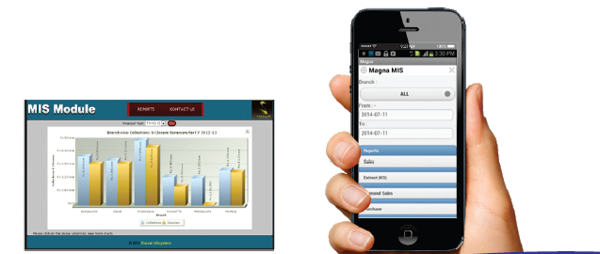MIS is short for management information system or management information services.
Management information system, or MIS, broadly refers to a computer-based system that provides managers with the tools to organize, evaluate and efficiently manage departments within an organization. In order to provide past, present and prediction information, a management information system can include software that helps in decision making, data resources such as databases, the hardware resources of a system, decision support systems, people management and project management applications, and any computerized processes that enable the department to run efficiently
Management information system (MIS)
- An MIS provides managers with information and support for effective decision making, and provides feedback on periodic operations
- Output, or reports, are usually generated through accumulation of transaction processing data
Outputs of a Management Information System
- Scheduled reports
- Produced periodically, or on a schedule (daily, weekly, monthly)
- Key-indicator report
- Summarizes the previous day’s critical activities
- Typically available at the beginning of each day
- Demand report
- Gives certain information at a manager’s request
- Exception report
- Automatically produced when a situation is unusual or requires management action
Management Information Systems for Competitive Advantage
- Provides support to managers as they work to achieve organizational goals
- Enables managers to compare results to established organizational goals and identify problem areas and opportunities for improvement
PROGRAM MANAGEMENT INFORMATION SYSTEM (PMIS)
- The core element of the system is quantitative data needs whereas the qualitative data needs cover from issue based monitoring, process monitoring and result monitoring
- There have multi layer system of planning, revised planning, and achievement entry procedure including draft, edit, and approval modalities as well as export and import wizards for offline data management
- Plan can be entered at union/ward level
- Achievement can be entered at union/ward
- The reports can be generated at different level and time period, e.g.,
- Donor wise,
- programs (water, sanitation, hygiene),
- subprograms,
- projects including different domains,
- PNGOs,
- areas (urban/ rural, union, sub-district, district, division, and country level), and
- Unions.
- There have the following disaggregated information:
- HHs,
- beneficiaries at male and female,
- children 0-5 years at boys and girls,
- adolescent of 6-18 years at boys and girls,
- DAP at male and female,
- ethnic people , and
- poor people at C and D category.
Benefits
- Time saving and optimum use of human resource
- Flexibility to generate reports at multiple layers and time, based on needs
- Less probability of human error
- More sharing opportunity
- Quick, easy, and common accessibility to information by any user across organizations
- Alignment between different databases that helps to make management decision in an easy way by cross-fertilizing
- Meet the information requirement of organizations including WA and PNGOs as well as different kinds of stakeholders including donors.


